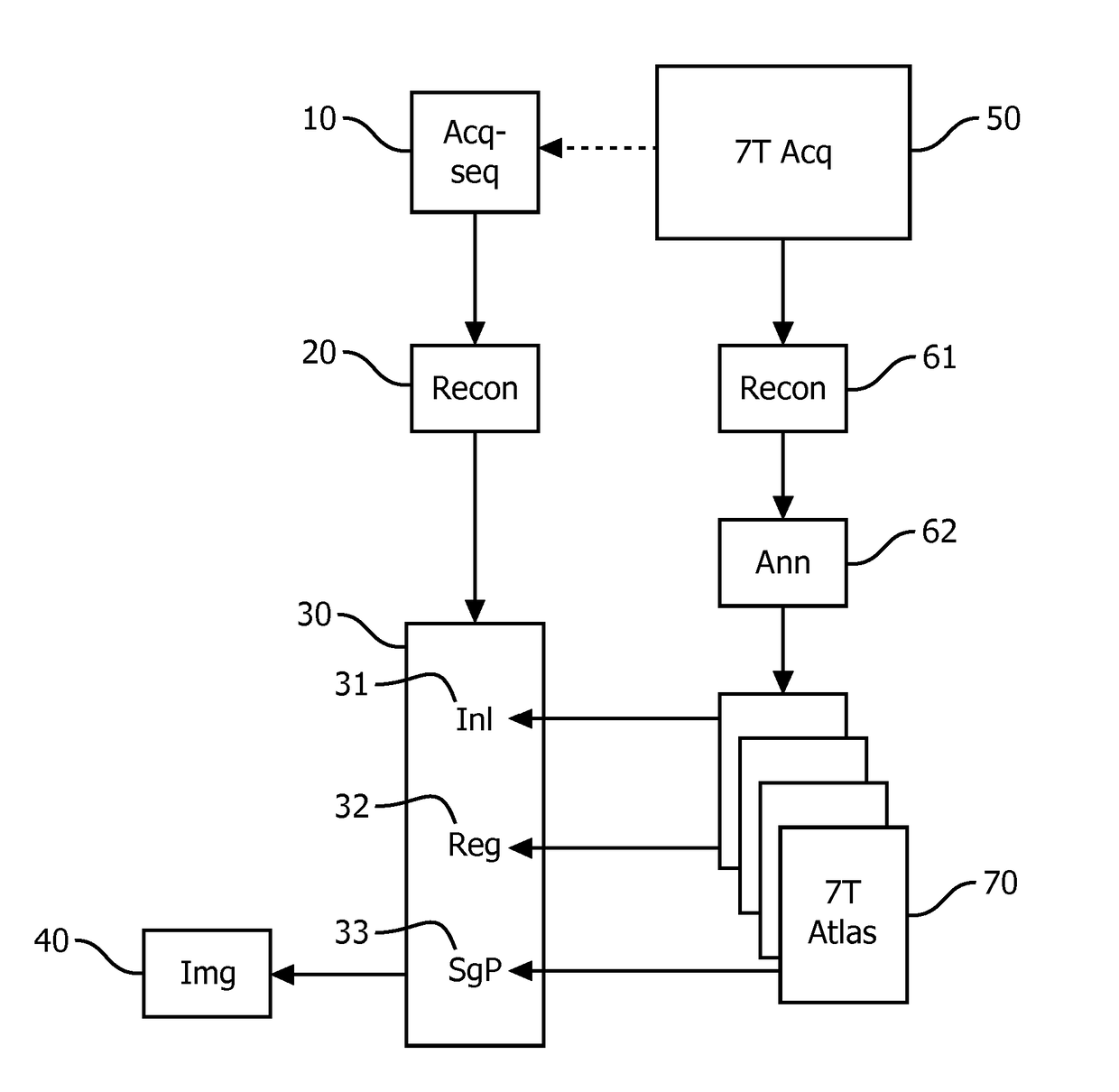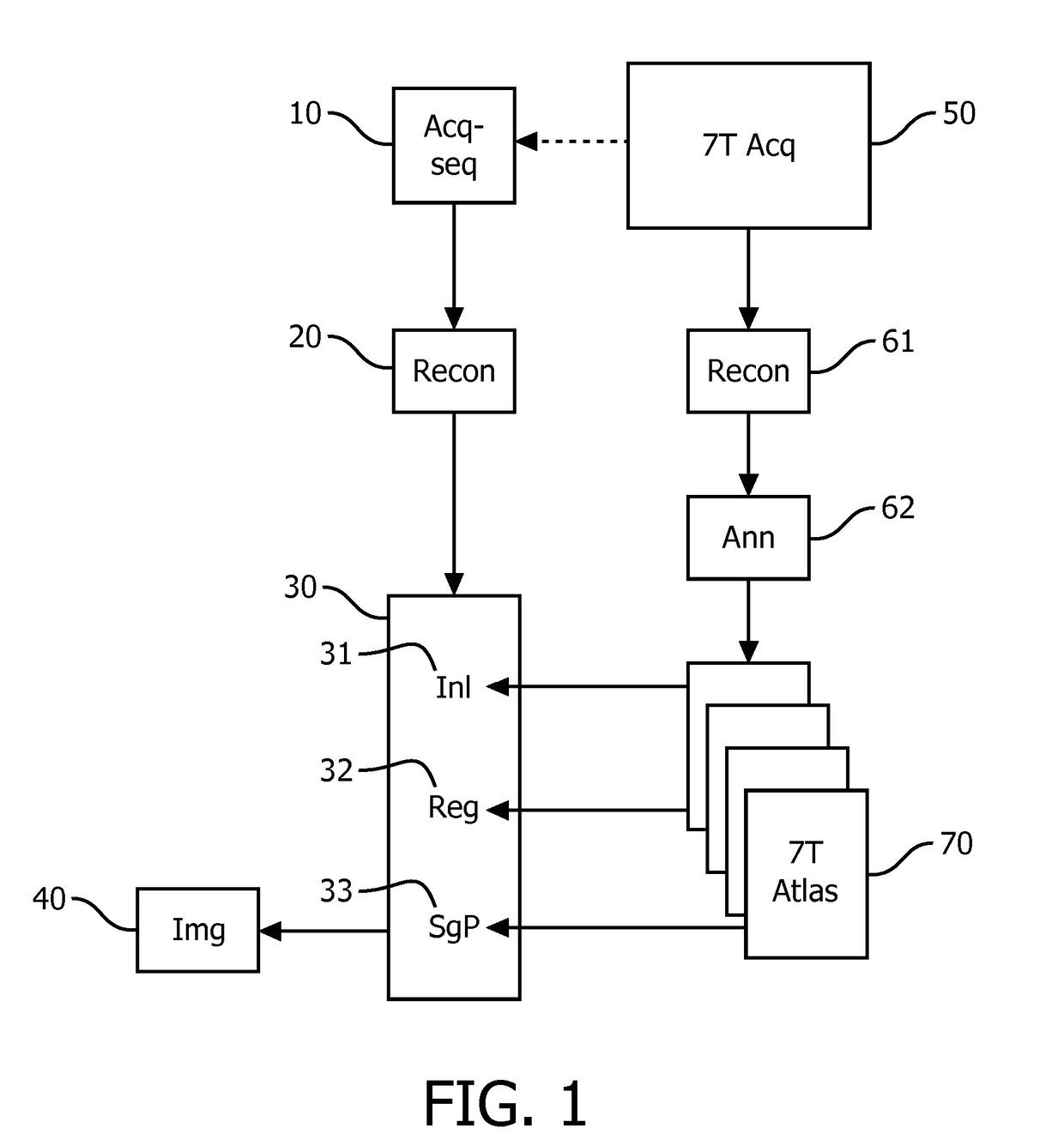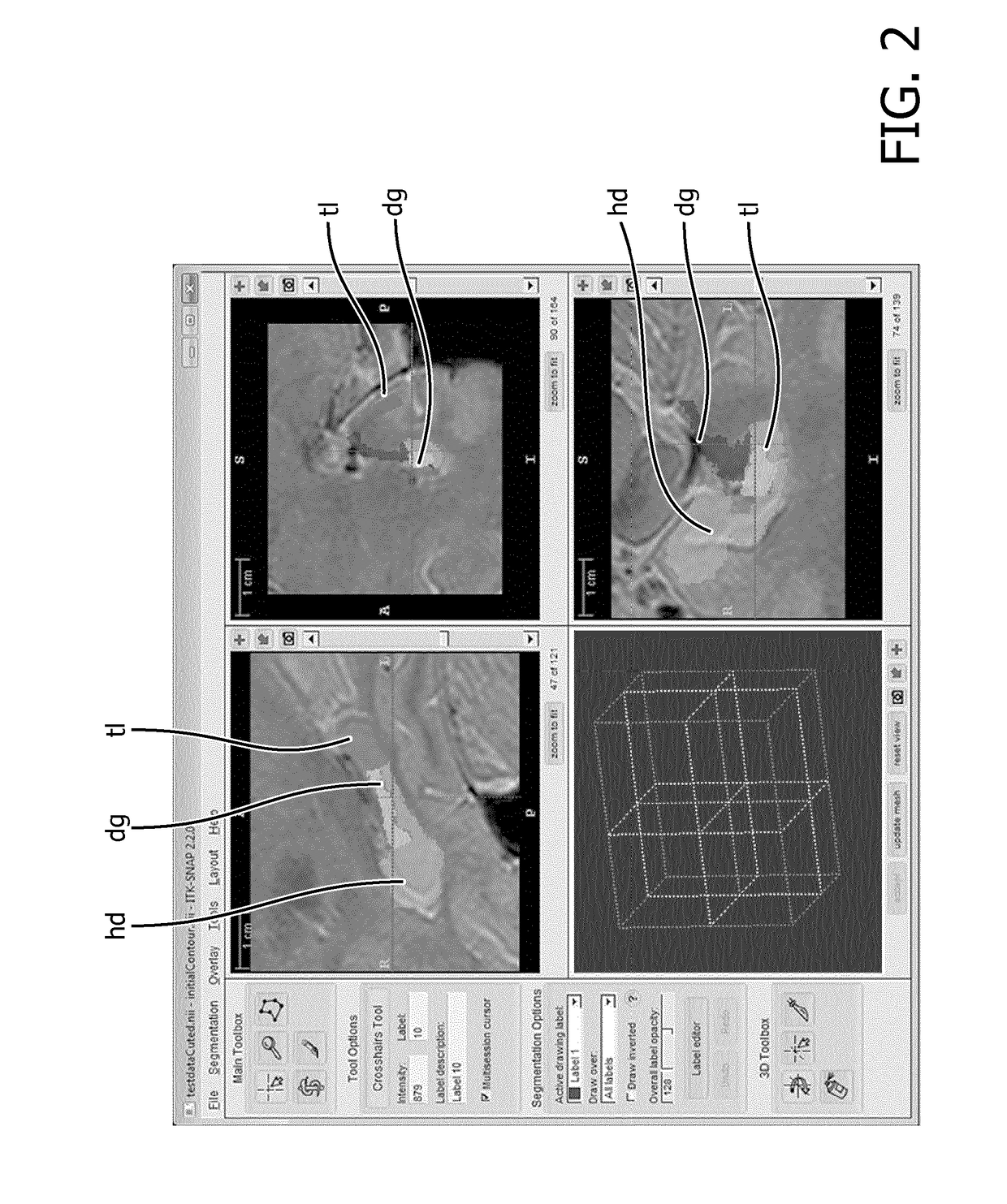MRI protocol for segmentation of an image detail using images acquired at two different magnetic field strengths
a magnetic resonance imaging and image detail technology, applied in the field of magnetic resonance imaging protocol for segmentation of image detail, can solve the problem of labour-intensive manual segmentation of the hippocampus from magnetic resonance images, and achieve the effect of accurately segmenting pre-determined image details
- Summary
- Abstract
- Description
- Claims
- Application Information
AI Technical Summary
Benefits of technology
Problems solved by technology
Method used
Image
Examples
Embodiment Construction
[0042]FIG. 1 shows a schematic representation of a magnetic resonance imaging protocol of the invention. The magnetic resonance signals for the diagnostic magnetic resonance imaging method are acquired in the acquisition segment 10 which is formed by a
[0043]MR acquisition sequence that is translated from the MR acquisition sequence that is employed to generate the training magnetic resonance images from magnetic resonance signal acquired at a higher main magnetic field strength as compared to the field strength at which the magnetic resonance signals for the diagnostic image are acquired. The translation of the MR acquisition sequence at ultra-high (e.g. 7 T) to high (e.g. 3 T) or medium (1.5 T) field strengths achieves that the acquired magnetic resonance signal give rise to a similar image contrast in both the diagnostic and training magnetic resonance images. By way of a reconstruction segment 20, the diagnostic magnetic resonance image is reconstructed from the acquired magnetic...
PUM
 Login to View More
Login to View More Abstract
Description
Claims
Application Information
 Login to View More
Login to View More - R&D
- Intellectual Property
- Life Sciences
- Materials
- Tech Scout
- Unparalleled Data Quality
- Higher Quality Content
- 60% Fewer Hallucinations
Browse by: Latest US Patents, China's latest patents, Technical Efficacy Thesaurus, Application Domain, Technology Topic, Popular Technical Reports.
© 2025 PatSnap. All rights reserved.Legal|Privacy policy|Modern Slavery Act Transparency Statement|Sitemap|About US| Contact US: help@patsnap.com



